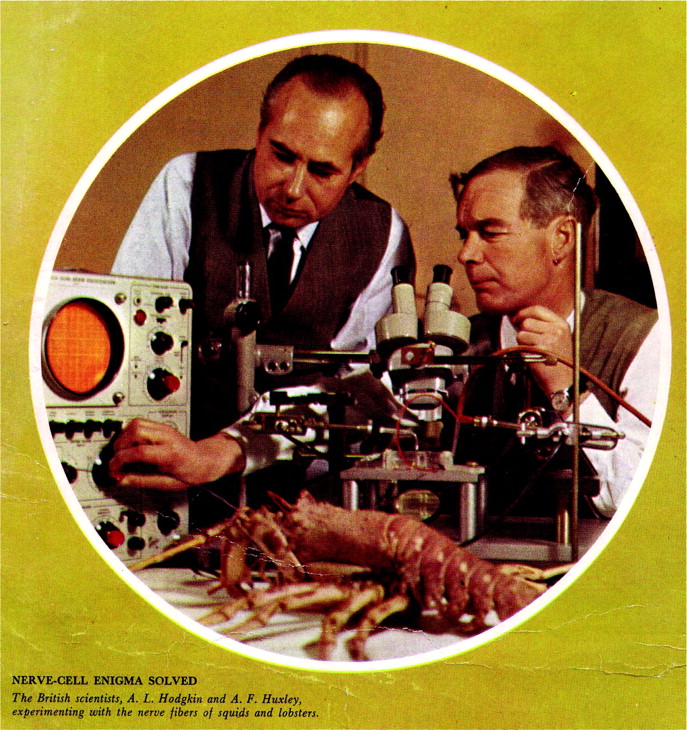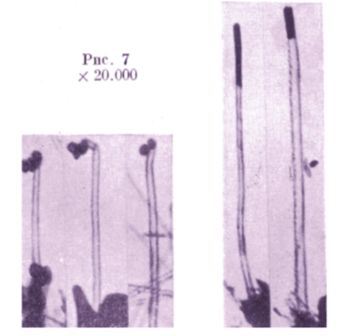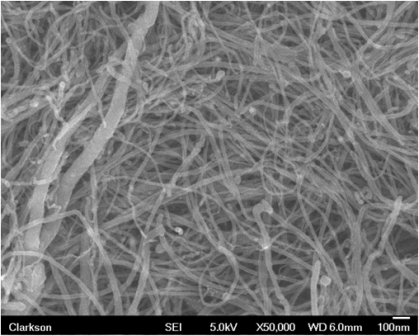Lobsters in bioelectronic experiments - now and more than 60 years ago
 The cover of the
1963 Nobel Prize Programme Huxley, left, looks on as Hodgkin adjusts
a brand-new Tektronix 502A oscilloscope. Together with John Carew
Eccles (27 January 1903–2 May 1997), Andrew Fielding Huxley (22
November 1917) and Alan Lloyd Hodgkin (5 February 1914–20 December
1998) won the 1963 Nobel Prize in Physiology or Medicine ‘for their
discoveries concerning the ionic mechanisms involved in excitation and
inhibition in the peripheral and central portions of the nerve cell
membrane' Programme provided by Deborah Hodgkin. Lobsters were used in the experiments
resulting in the Nobel Prize.
|
The biofuel cell composed of two pairs of
the biocatalytic cathodes–anodes
implanted in two lobsters wired in series and used for powering an electronic watch. The experiments (Katz
group, Clarkson University) were published in:
K. MacVittie, J. Halámek, L. Halámková, M. Southcott, W.D. Jemison, R. Lobel, E. Katz. Lobsters were used in the experiments as well. See also a movie. |


